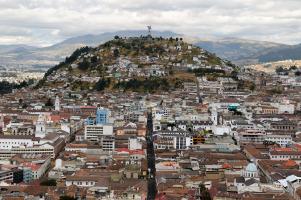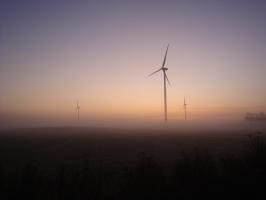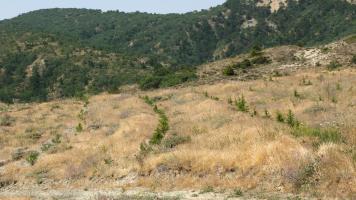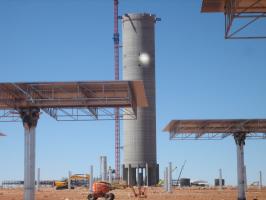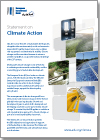EIB Climate Action Showcase Part 1
The EIB is proud to take part in COP 20. Here is a showcase of some of the Bank’s climate action projects across the world and in our host nation and city. The EIB supports projects in renewable and transition fuels, sustainable transport, adaptation and mitigation, and forestry.
A sustainable metro for Quito
Quito is a busy, bustling city. The capital of Ecuador is located high in the Andes, housing 2.2m inhabitants at an altitude of 2 800m. To cut fuel consumption and greenhouse gas emissions, as well as easing congestion on the city streets, the government and municipal authorities took the ambitious decision to build a metro. The EIB is supporting this EUR 1.3bn sustainable transport project with a loan of EUR 200m. The transport modal shift arising from the 22.5km North-South underground rail system is expected to save 30 000 tonnes of CO2 emissions per year, as 320 000 passengers eschew the car in favour of the train. Quito’s authorities will do what they can to encourage this shift by integrating the metro into the existing public transport network. Estimates suggest that the economic benefits to the city will cover the investment costs twofold, and the subway system comprising 15 stations and 18 trains will create approximately 800 jobs. It is scheduled for completion in 2016.
Electrical revolution in Poland
Demand for electricity in Poland is ever growing, but as a coal-rich nation is reliant on aged and polluting coal and lignite generators. Commendably, Poland has committed to source 15% of its electricity from renewable sources by 2020. To support these plans, the EIB provided a PLN 178m (EUR 45m) loan for the construction and operation of a wind farm, located on two sites to the east and west of the village of Margonin, north of Poznan. The 60 turbine wind farm became fully operational in April 2010 and, with a capacity of 120MW, is one of the largest of its kind in the country. Margonin produces enough electricity to cover the demand of about 55 000 households, and accounts for 5% of Poland’s total installed wind capacity. Harnessing this much power from the wind allows for CO2 emissions savings of 260 000 tonnes per year, when compared with coal burning. Poland is certainly diversifying and greening its energy mix.
Turkey’s green shoots
Turkey’s soils are amongst the most vulnerable to erosion on the planet, so the country’s Ministry of Forestry and Water Works is seeking to make forest and rangeland healthier and more resilient. The EIB has lent EUR 150m to assist with the afforestation of 100 000 hectares, the rehabilitation of 70 000 hectares of degraded forest and 30 000 hectares of weakened rangeland, and erosion control for a further 190 000 hectares of vulnerable land. Forests have a considerable mitigating effect on CO2 emissions and provide a vital socio-economic contribution to about eight million people living in Turkey’s rural areas. 90% of the programme’s targets have been achieved or exceeded in the past year: 230 000 tonnes of CO2 emissions have been captured, equivalent to 150 000 people taking return flights from Ankara to New York. Furthermore, these initiatives also employ some 6 500 people in rural areas, where incomes are rather lower than the national average. The Turkish authorities wish to see national forest coverage of 30% by 2017. The target is ambitious but they are getting there.
South Africa’s key solar one
South Africa has a shortage of energy generating capacity, and in the South African Renewables Initiative, set itself the target of sourcing 15% of total power generation from renewables by 2020. In 2011, this figure was less than 2%. The eye catching Khi Solar One power plant will contribute to this. The EIB has lent EUR 50m towards the project, which is the first large concentrated solar power facility in sub-Saharan Africa. Khi Solar One will have a capacity of 50MW. It will consist of over 4 500 moving mirrors, known as heliostats, which reflect light onto a receiver on top of a 200m tall tower located in the centre. This concentrates powerful solar energy into a small area, producing steam and driving a turbine. The technology allows for a reduction in water consumption of 80% compared to traditional electricity production, while Khi Solar One will avoid approximately 181 000 tonnes of CO2 emissions per year once it is fully firing. The plant will create 600 jobs per year during its construction phase, with 35 full time operatives and 40-60 full time positions for local suppliers and contractors when it is in operation.


